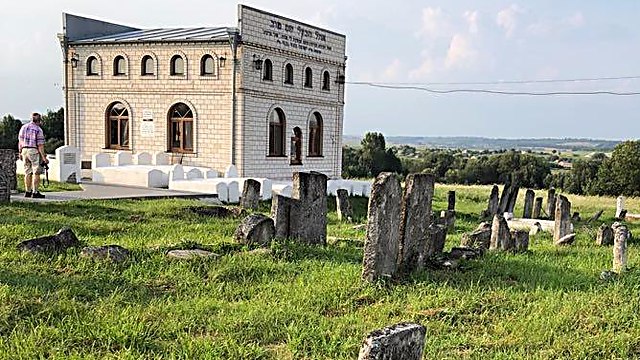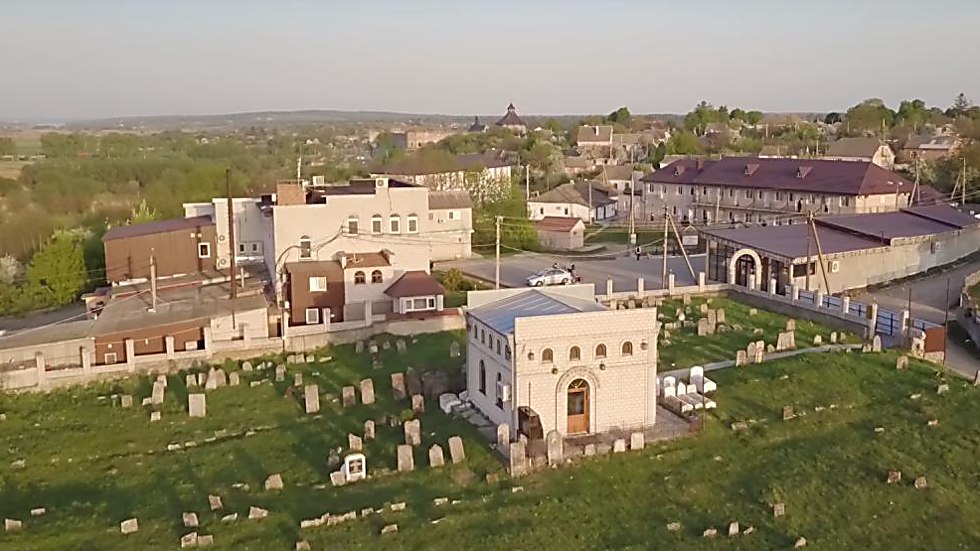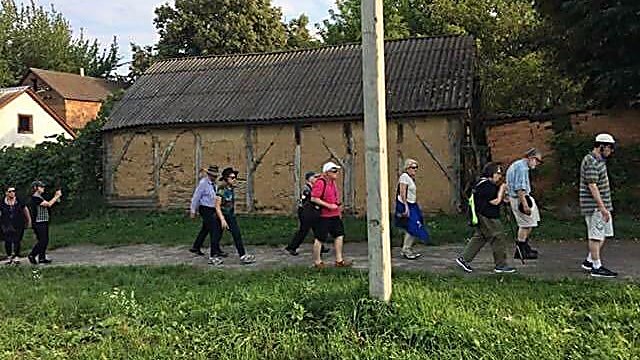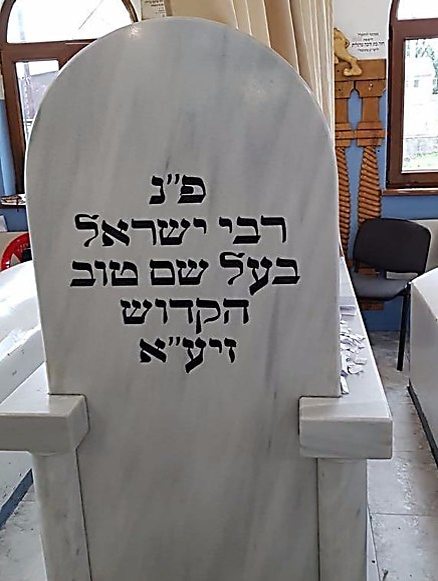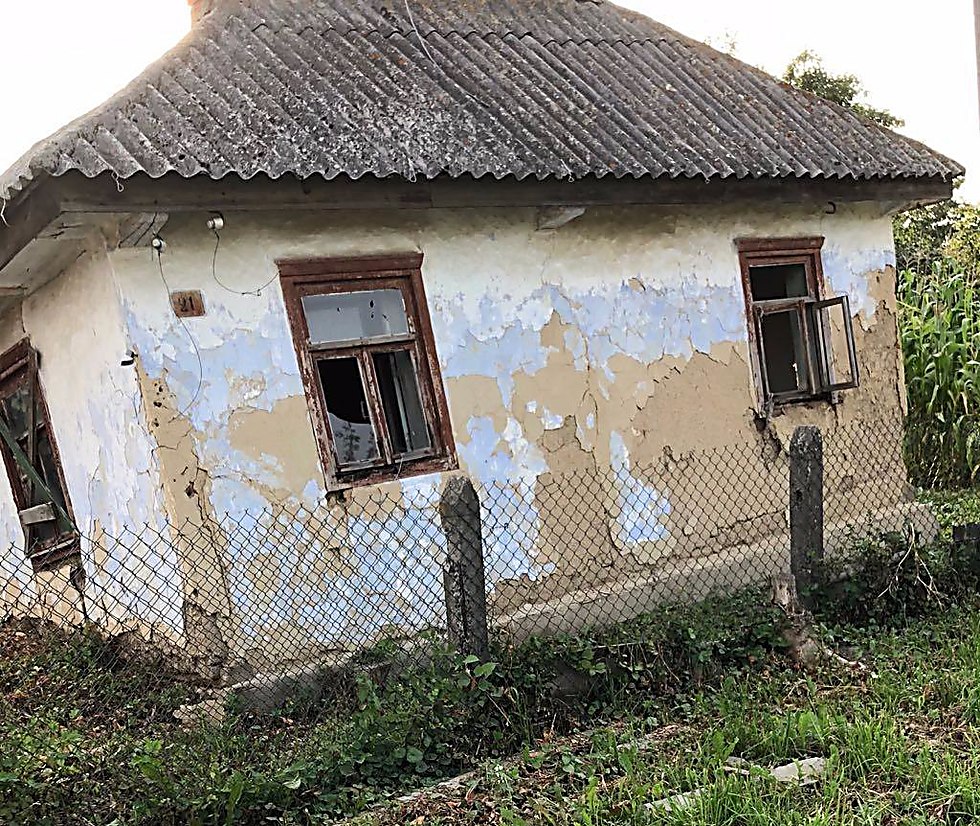
In his famous book the Death of the Shtetl, Yehuda Bauer, one of the greatest Holocaust researchers of our time, describes seven famous shtetls that represent a mere fraction of the 3,000 and more towns—all of which have disappeared entirely. Others described daily life in the shtetl: Sholem Aleichem’s Boyberik in Tevye der Milkhiker resonated with us for more than a century, as well as famous works by Shmuel Yosef Agnon (from the town of Buchach), Isaac Bashevis Singer (from Bilgoray) and Elie Wiesel (from Siget)—all Nobel Prize winners who brought the Jewish town to life.
These writers gave us the colorful and vibrant picture of Jewish life, but also described the dismal poverty, religious zeal, community politics and relationships with the non-Jewish population: rural types, clergy, statesmen and rich regional lords.
Today, an attempt to recreate the old lifestyle, even if somewhat artificially, can no longer go unnoticed in the west of Ukraine. The old and the new mix in these renovated towns, abandoned during the war, when their 2.2 million Jewish residents perished.
Between Kiev and Lvov
It takes a little under three hours to travel between Kiev and Mezhbizh, not a great distance in this vast country. But the city (that numbers 4 million residents) and the town (that numbers 2,000) boast totally different lifestyles. It’s hard to find a link between the luxurious houses of Khreshchatyk Avenue in Kiev and the busy Baal Shem Tov Mezhbizh Street, with its sign written in Hebrew and Ukrainian.
The path between the two, that only comes to life by the passing buses full of Jewish tourists, runs through the gray town of Žitomir, a focal point for the Jewish Enlightenment period. It’s worth visiting just to catch a glimpse of where Hayim Nahman Bialik, Israel’s national poet, lived as a young man.
We visit the famous print house that operated in Žitomir, and continue to Bardichev, once called the Jerusalem of Volhynia, that lies 40 kilometers away and was known as the city of Rebbe Levi Yitzchok of Berditchev. His grave stands out in a cemetery whose tombstones are shaped like boots, and attracts thousands every year.
The streets of Berditchev are empty, its shops closed and its residents gray and grim-faced. We continue on the narrow path that leads to Mezhbizh, the city of the Baal Shem Tov, the founder of Hasidic thought, whose birthday in the Hebrew month of Elul (usually August-September) draws great crowds.
The Baal Shem Tov lived in this forsaken town for more than 20 years, where he started his work. But what did he see in Mezhbizh? Today’s town is a gloomy relic of the past’s glory.
Some 250-300 years ago it wasn’t a small and poor town, but rather one of the greatest cities in Ukraine. It numbered 5,000-10,000 people—five times the number of its residents today. Mezhbizh was a regional center, from which the spiritual and social movement that revolutionized Judaism—Hasidic practice—spread and made its mark on the Jewish people.
The Pantheon, a Hasidic cemetery, was built near the Baal Shem Tov’s grave. It still draws tens of thousands of Hasidics pilgrims every year, as it did decades ago, when this place was still a Jewish town.
In the past, Jewish residents made up a third of the town, huddled around the Rebbe's Synagogue and other Torah institutions that served the thousands of Jews who came to to express their devotion to him and to later Hasidic Rebbes.
This magnificent kingdom was all destroyed during the Holocaust. No Jews were left in Mezhbizh.
The shtetl comes to life
Today, most of the Jewish incoming tourism to Ukraine comes from Israel. Hasidic tourists comprise the majority—and at times use the visit as an excuse to go abroad, since the Halacha (Jewish law) forbids traveling for entertainment. The more tourists there are, the more tourism infrastructure that highlights Jewish interests is needed.Besides tourists that come to prostrate themselves on the graves of the sages (in Uman, Mezhbizh and Berditchev ), there is a growing number of tourists who go on seminars in the footsteps of Hebrew literature, the fathers of Zionism and Hasidic history. So many pillars of Jewish and Zionist history in such a desolate region.
The developments in the infrastructure of Jewish sites is evident. Uman stands out, followed other Rebbe’s graves in Mezhbizh, Sadigura by Chernivtsi, and Belz, located in north western Ukraine, among other sages’ grave sites renovated in recent years.
The map of the sages' graves in Ukraine has grown to include more sites than anywhere in Israel. The massive stream of tourists has even led to the surprising initiative—to renew the Mezhbizh shtetl and renovate old Jewish homes abandoned decades ago.
An Israeli street in Mezhbizh
Walking through the streets of the old shtetl, you wonder, who would want to live here? Will this tiny Ukrainian town ever again be home to a Jewish population? And how will the local population receive the old-new residents?The 500m stretch between the Baal Shem Tov’s grave site and his Torah institutions is surrounded by old mud and straw homes, fenced off in order to prevent people from entering. More than 10houses are on their way to being renovated, and becoming homes for Jewish families who want to return to the town. What will their children do, roaming in the old shtetl streets? No one seems to have considered that.
Hasidic people who have already left Israel and made Mezhbizh their home are quick to tell about the new Jewish town that’s being built. There is already a large Jewish hotel, a Kosher restaurant, a yeshiva and Torah institution, all located in proximity.
In two to three years, promise the entrepreneurs, the shtetl will have a Jewish-Israeli street with two or three renovated synagogues. The town, forsaken like thousands of others 77 years ago, is about to be resurrected.















